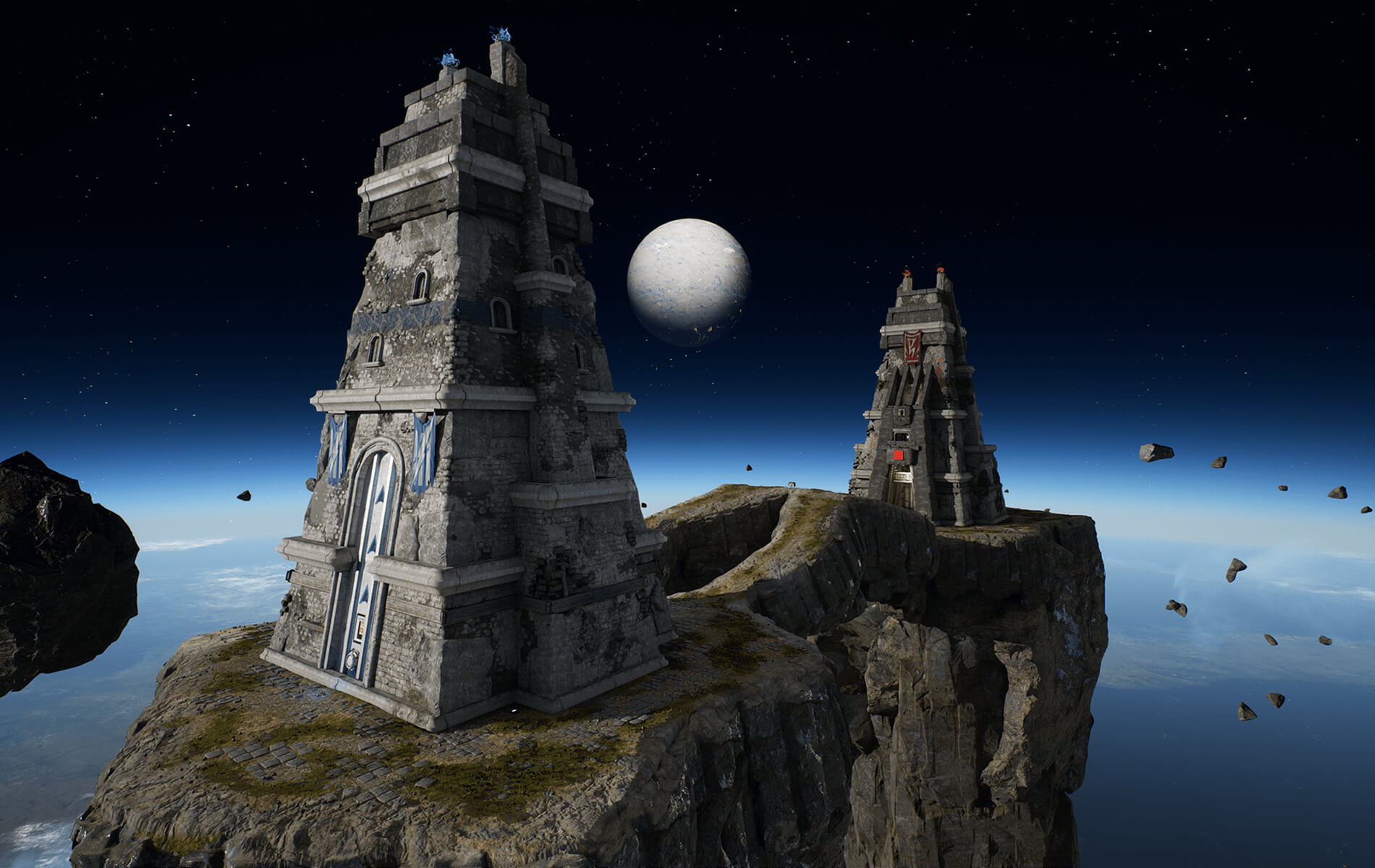 Above us, the moon. Beneath us, the Earth. In front of us, a massive, three-story tower. Overlapping bleeps and bloops accentuate the eerie calm. We're blasting off into orbit, and you might know where we're headed. Never before, nor since, has Capture the Flag been so much fun.
Above us, the moon. Beneath us, the Earth. In front of us, a massive, three-story tower. Overlapping bleeps and bloops accentuate the eerie calm. We're blasting off into orbit, and you might know where we're headed. Never before, nor since, has Capture the Flag been so much fun.
For the uninitiated, here's a little bit of context: Unreal Tournament drew first blood on the PC in 1999, with a fanciful, science fiction tone and particularly gory splatters. The game focused its efforts on online multiplayer---there was a single player campaign, but beyond using it to learn the controls, few players paid attention to it.
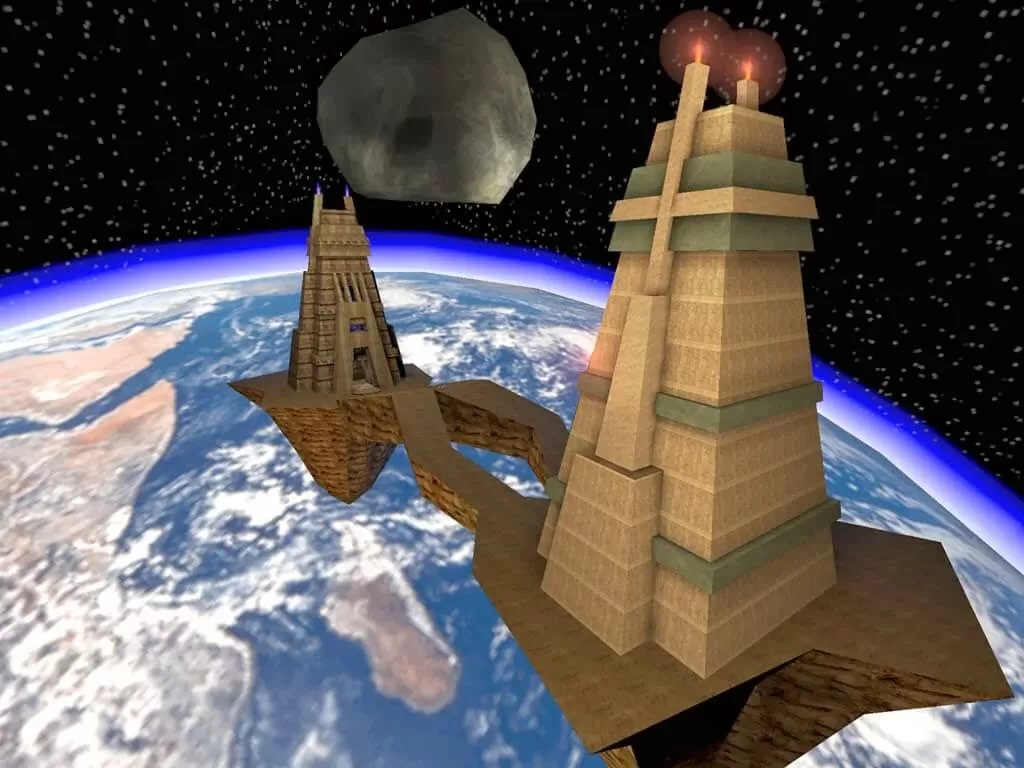
As for myself, I was too busy teaming up with my college roommates, squaring off against other dorms on our school's LAN. And although we explored every game type and mod of the multiplayer (from Assault to Zero Gravity), we eventually settled on two game types that we enjoyed above all others, two types that tested our reflexes, skills and teamwork.
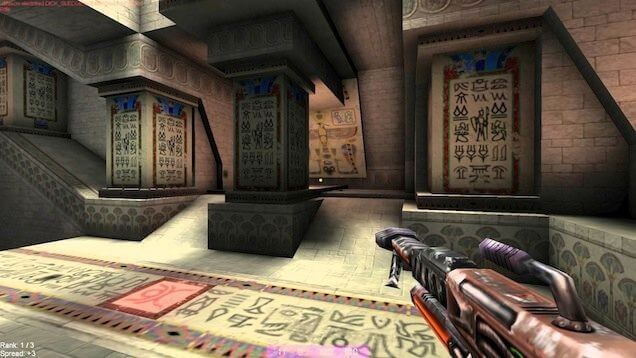
The first was the Instagib Deathmatch---an every-man-for-himself, one-shot kill gorefest. Instagib was reliant on impulsive, twitch reflexes---the ability to aim your cursor with accuracy and click the mouse button a little faster than your opponent. The best thing about these early first person shooters was the lack of realism---there was no 'natural shaking' to your reticle, and your accuracy was completely your own.
But Instagib was the mere appetizer for the larger meal. My suitemates and I used it as a warmup for our favorite mode, which combined reflexes with deep strategy.
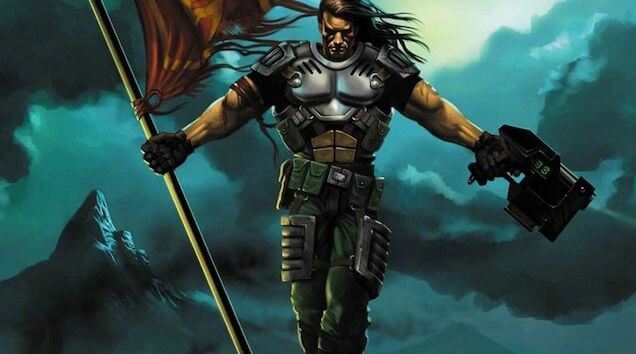
This was Capture The Flag:
- Step 1: Fortify the Flag in your base.
- Step 2: Shoot your way into your opponent's base.
- Step 3: Steal your opponent's Flag.
- Step 4: Hightail it out of there, while your teammates cover you.
- Step 5: Make it all the way back to your own base, without dying, to score a point.
It was team versus team. It required clear, transparent communication to earn a win---this usually involved us yelling across the hall to one another. And as a dorm suite, we played one map, almost exclusively---Facing Worlds, a level designed by game developer Cedric Fiorentino. It was so well-designed, so carefully constructed, that every other CTF map paled in comparison.
The structure was this: There were two towers, which served as each respective team's home base. Each tower was three stories high, plus the roof, which might technically count as a fourth floor. If you walked into your team's tower through the front entrance, the layout was fairly simple.
To your right, shielded by a single wall, was your flag, which you had to protect at all costs.
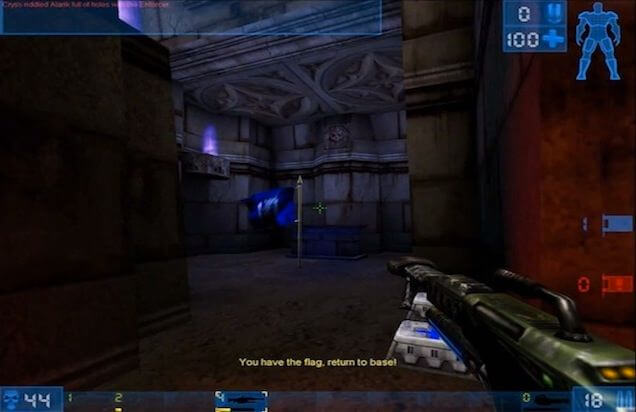
To your left, closest to the door, was a teleporter, which took you to the second floor.
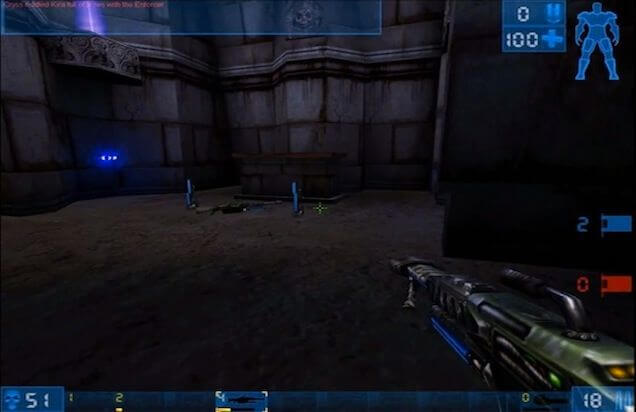
To the right of that, nearer to the flag, was a second teleporter---this one took you to the third floor.
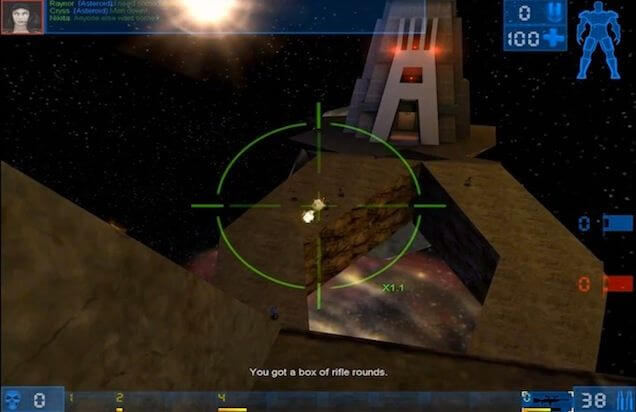
And, directly ahead of you, behind the front wall, was the third teleporter, which led to the tower's roof.
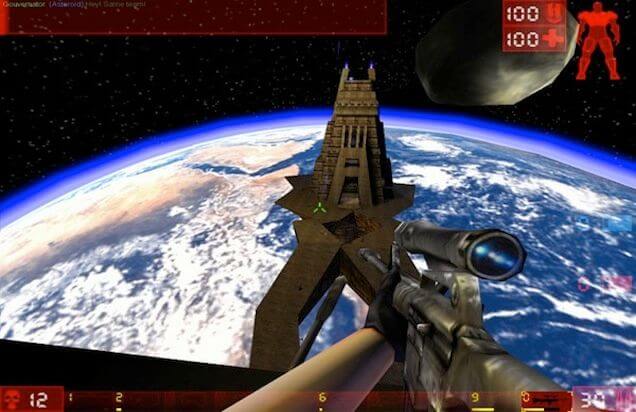
Lastly, a long narrow pathway, with a hole cut out in the center, separated the two towers. This pathway inclined on both sides to form a peak at the center of the map---in other words, if you were to charge your enemy's base, you would run uphill for the first half of the trip. And then, once you reached the midpoint, you would race downhill to reach the opposing tower.
Layout wise, that's about it. Facing Worlds was very much a 'what you see is what you get' sort of deal. But its elegance was in its simplicity---little, subtle things made this map as exciting as anything we'd ever played.
First, the peaked quality of the pathway created a massive blind spot. You could, theoretically, use the translocator to transport yourself into mid air and see over the peak. But most of the time, as a ground attacker, you had no idea what was waiting for you on the other side. And when you finally did crest over, you often wished you hadn't. Likewise, as a ground defender, you didn't see your attacker until he or she was right on top of you. It was a double-blind circumstance that promoted reactive, 'on the fly' playmaking.
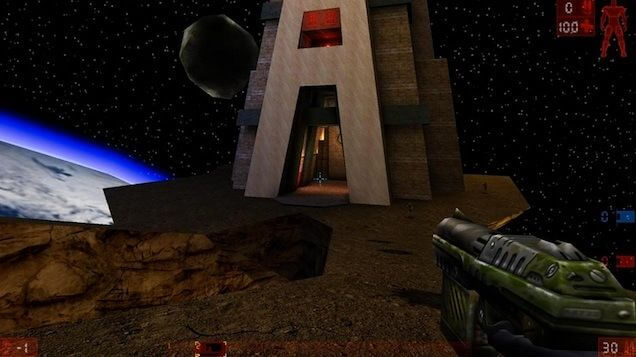
The only way to reliably see the entire map was to stay in your defending tower, and set up a sniper's nest on the second floor, third floor, or roof. And once you got up there, you rarely wanted to come back down. What a view. You could see the entire terrain---all the way back to your opponent's tower. Other CTF maps were not so open---they had closed=off corridors, twisty turns, and multiple inclines/declines to get to and back from your opponent's base.
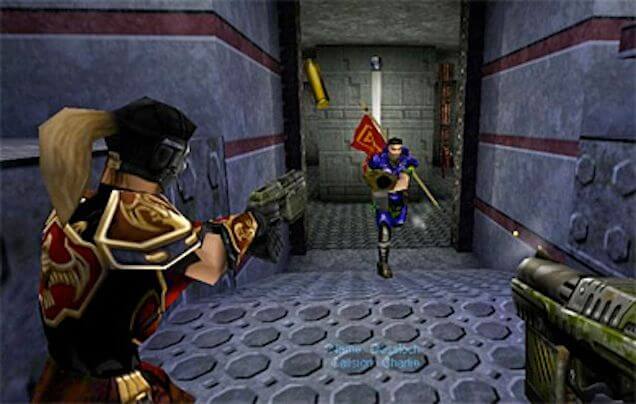
This broke the tension substantially, because at some point, you would be 'safe.' Take the Gauntlet map, for instance. If you stole the flag and then killed your opponent, he or she would respawn at a different location. By that point, you'd be halfway back to your home base. Thus, in a map with closed, winding corridors and no bird's eye view, all it took was one mistake to end a match. Sure, it could be fun, but it was also short, and it usually felt like mayhem---running, gunning, and hoping for the best, rather than true strategy.
On Facing Worlds, the map was so open, so sprawling, that you were always in danger. Your tower enemies had high ground and scoped sniper rifles---there was nothing between you and their line of vision, regardless of where you were on the pathway. Facing Worlds was a sniper's paradise, and it was deliberately built to be so. In most scenarios, 'camping' was the only viable strategy to defend your base; you climbed on the roof and shot anything that moved with extreme prejudice. Good snipers turned Facing Worlds into a lengthy battle of attrition---a match could last for over an hour if everyone decided to hunker down and play defensively. The game rewarded your good aim with some of the best congratulatory voiceovers in gaming. A deep-pitched, rumble of a voice pronounced how awesome you were in no uncertain terms. HEADSHOT. MULTI KILL. ULTRA KILL. M-M-M-M-MONSTER KILL!!
If you decided to brave the outdoors and cross the map, your options were limited. You could try hopping up and down like a bunny rabbit, to make yourself a little bit more unpredictable. But your best offensive and defensive weapon was actually your Translocator, which allowed you to teleport, Nightcrawler style, to wherever you threw it.
This video shows professional gamer Se7en, who uses the Translocator on Facing Worlds to stunning effect. Take a look:
Of course, even under the best circumstances, you still had to worry about sniper nests and enemy ground troops as you came over the crest. There were no heroes on Facing Worlds---everyone needed to work in conjunction to be successful, and no teammate could be spared. There were just too many moving parts, and too many things with the potential to go wrong.
Still, there was time for some shenanigans. My favorite trick was to hide and snipe in my opponent's tower---how many people could I kill before they figured out what I was doing? The opponent's tower was also a great place to hide after stealing the flag---no one expected you to hide rather than run, and your teammates could take out the majority of the enemies before you made your fast break for home.
And who could forget the Redeemer? On the second floor of both towers was a manually-guided, nuclear warhead bazooka. If you were on the receiving end, you could see this damn thing when it launched from across the map. You could try shooting it out of the air, but your hands shook as the warhead inched closer, and closer, and closer, before exploding in a pixelated mushroom cloud.
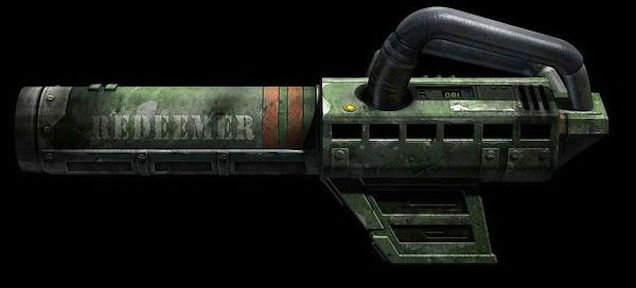
It's been years since I've played the original Unreal Tournament, but it still comes back to me in strange ways. I've recently begun watching soccer, and I love the roar of the crowd and the announcers' reactions whenever there's a goal. Unlike in a high-scoring game like basketball, a goal in soccer is a rare occurrence. Soccer is defensive by design, and so the excitement and suspense just builds. And builds. Until finally, the little mistakes pile into big ones, the home team scores a goal, and everybody loses emotional control.
Facing Worlds had the same type of slow burn---endless hours of restless stalemate punctuated by sudden bursts of adrenaline. I still miss those highest of highs, when I charged across the map and crested over that incline, rocket launcher in hand, ready for whatever my opponent was going to throw at me.
Republished with permission. This article was originally published on November 24, 2014. Guest author Kevin Wong is an AP English teacher and freelance writer from Queens, NY. His focus is on video games, American pop culture, and Asian American issues.You can follow him on Twitter.
